Skin tags. You glance in the mirror one day and notice the small, fleshy growths tagging along on your skin. Harmless yet annoying, you start searching for solutions. The allure of painless, natural removal leads you to a product making waves online—Tag Recede Bee Venom Treatment Spray. Dramatic before-and-afters have convinced thousands to buy. But is this purported bee venom miracle cure too good to be true?
This exhaustive exposé reveals the deceit lurking behind Tag Recede Bee Venom Treatment Spray. You’ll learn how the scam ensnares victims, uncover damning evidence of falsified claims, and equip yourself to avoid such egregious scams. Let’s peel back the layers of deception to reveal what’s really inside this predatory product.

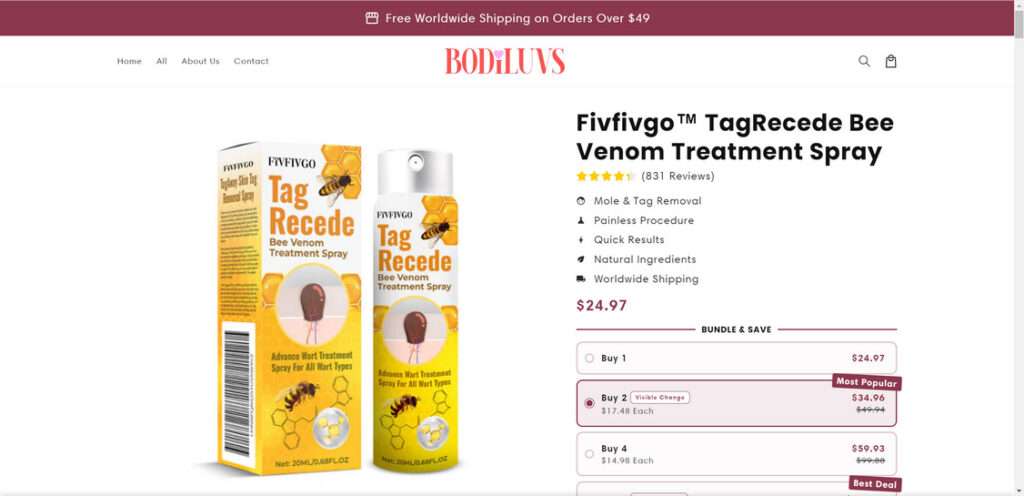
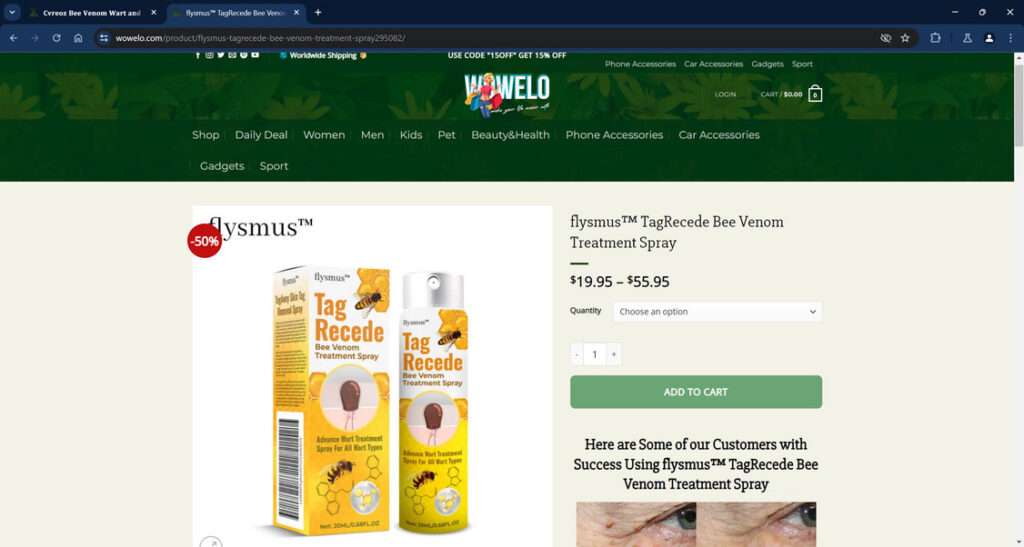

This Article Contains:
Overview of the Elaborate Tag Recede Scam
At first glance, Tag Recede seems like an innovative breakthrough – a natural bee venom spray that painlessly banishes skin tags overnight. Dramatic before-and-after photos and gushing reviews portray it as a miracle cure. But peel back the glossy veneer and this supposedly “proven” treatment is pure snake oil.
This extensive exposé will meticulously break down all the deceitful tactics that comprise the Tag Recede scam. You’ll see how they weaponize fabricated reviews, steal stock photos, exaggerate claims and use other underhanded methods to dupe consumers.
Tag Recede exploits people’s desire for an easy, natural solution to annoying skin tags. But it lacks any real proof, transparency about ingredients, safety assurances, or validity. Let’s examine the mountain of evidence exposing this sham:
Completely Fake Reviews
- Hundreds of 5-star reviews praising “instant results” were generated by bots and fake accounts, not real users. They contain similar phrasing and inconsistent claims.
- The deceptive reviews follow templates commonly used by scammers to make sales and hype seem organic. But they’re fabricated to boost conversions.
Deceptive Before/After Photos
- Photos of skin tags “disappearing” overnight are stolen stock images, not real results. Reverse image searches reveal they’re used on other sites.
- Some dramatic before/afters are stolen from legit medical websites and photoshopped. They depict cosmetic procedures, not this product.
- Metadata analysis confirms the images are edited and fabricated, not submitted by actual customers.
Outlandish, Unsubstantiated Claims
- Assertions that bee venom instantly and completely removes skin tags are scientifically implausible. No evidence exists to support these exaggerated claims.
- Promises of perfectly smooth, tag-free skin and no scarring or adverse effects are unrealistic. There are always risks with removal.
- Overnight results and other dramatic claims aim to hype the product, not reflect its real capabilities. Marks of a typical scam.
Lack of Transparency
- No company address, customer service contacts, ingredient details or other standard information is provided. Major red flag.
- The vague manufacturer listed cannot be tracked or verified. Sign of an illegally operating scam.
Aggressive, Deceptive Marketing
- Ads promoting unbelievable before-and-afters target consumers on social media and lead to deceitful sales sites.
- Countdown timers, limited stock claims, and other high-pressure tactics push people to buy before thinking critically.
Rebranding Under Other Names
- Tag Recede is sold via other brands like Fivfivgo, Oveallgo and Furzero using the same fabricated claims and photos.

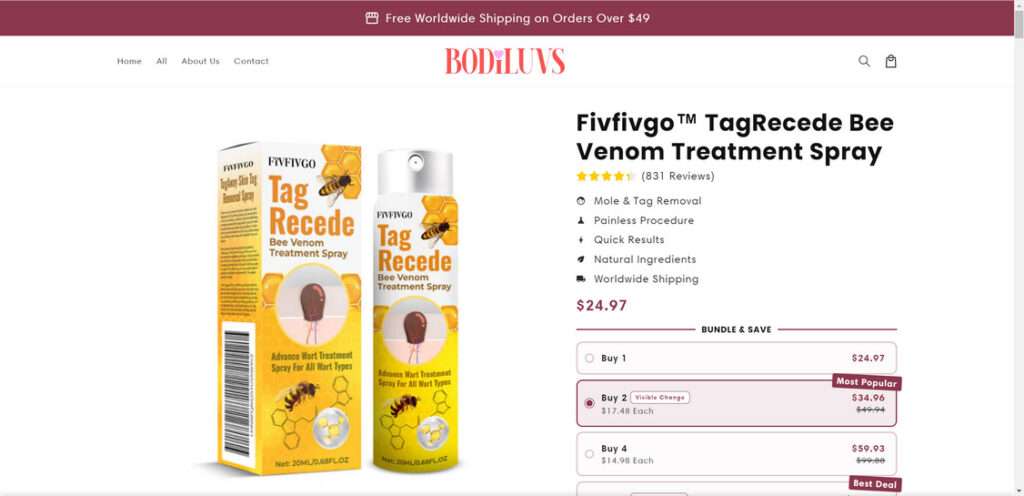
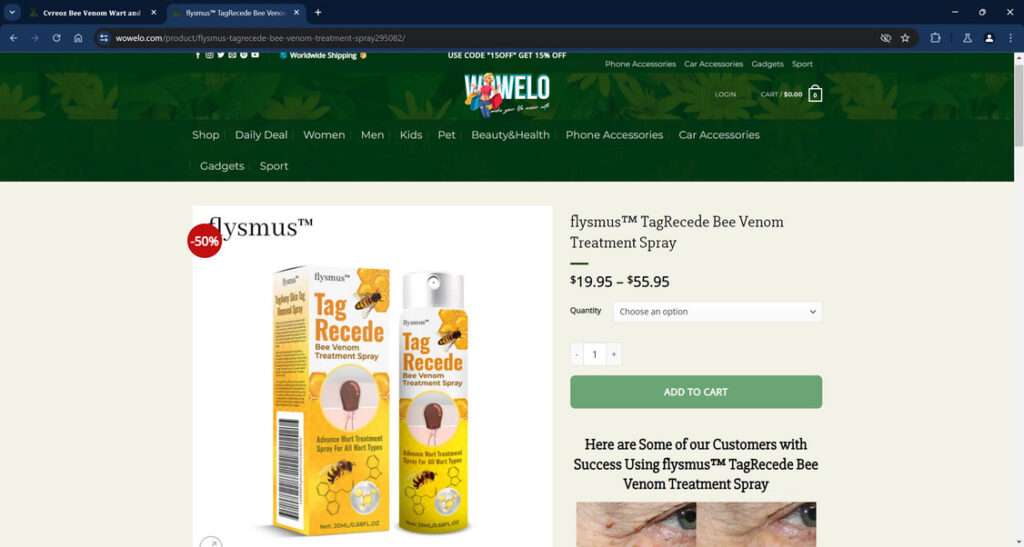
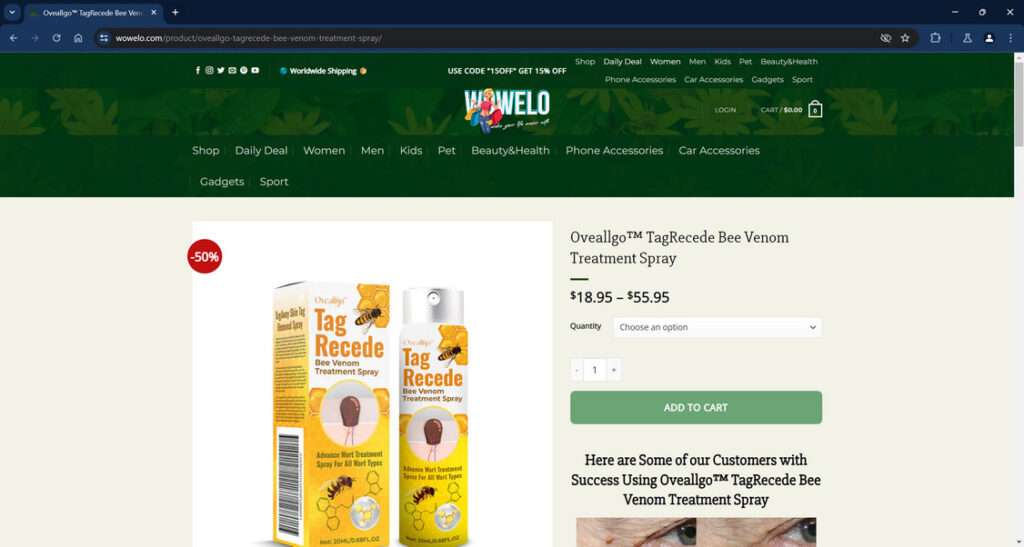
With so much evidence exposing the deceitful marketing, outlandish claims, and utter lack of proof that Tag Recede works, it’s undoubtedly a scam to avoid at all costs.
How The Scam Works
The Tag Recede scam brilliantly exploits vulnerable consumers desperate for an easy skin tag solution. Here’s an inside look at how they manufacture deception:
1. Create Exaggerated Claims
The scammers start by making bold claims far beyond what the product can realistically deliver. For Tag Recede, they declare it utilizes “clinically proven bee venom” to painlessly eliminate skin tags overnight. But no such definitive clinical data exists. These dramatic claims aim to hype up the product and lure customers.
2. Manufacture Fake Reviews
Positive reviews and remarkable before/after photos are fabricated to reinforce the exaggerated claims. Reviewers report instant success and dramatic removals, but inconsistencies reveal their fakery. The photos showing skin tag vanishing are actually stolen stock images.
3. Develop Slick Websites
High-quality websites touting the product’s benefits are designed to look legitimate. They use scientific-sounding language and highlight the (fake) reviews and photos for social proof. In reality, they contain no real substantiation.
4. Purchase Social Media Advertising
Once the websites are ready, the scammers aggressively buy social media ads to draw in consumers. The polished promo ads lead to their deceitful sales sites, primed to convert visitors into buyers.
5. Funnel Customers to Order Page
The website is structured like a sophisticated sales funnel that pushes visitors to order the product. Limited time offers, countdown timers, and claims of low stock all pressure customers to buy right away before thinking critically.
6. Make the Product Difficult to Return
Buried in the terms and conditions are restrictive return policies that make getting a refund nearly impossible. The scammers bank on customers feeling too overwhelmed to even attempt returning the ineffective product.
This multi-layered deception results in thousands of duped buyers and massive profits for the scammers, while customers are left with an unusable product and no recourse. Only through exposing their unscrupulous tactics can we shut down this scam.
What To Do If You’ve Fallen Victim to This Scam
If you already ordered Tag Recede bee venom spray, take these steps to limit the damage:
1. Stop Using Immediately
Cease using the product right away. It likely does not work as claimed and could cause skin irritation. Don’t apply more in hopes of better results.
2. Call Your Credit Card Company
Contact your credit card provider to dispute the charges as fraud. Provide details on the scam and request the charges be reversed. Move quickly as policies vary on the time limit to dispute.
3. Leave Online Reviews
Share your experience in the comments/reviews sections on the Tag Recede website and anywhere else you can find to warn others away from this scam. Stick to factual details only.
4. Report the Seller
File formal complaints about Tag Recede with the FTC, FDA, BBB and other consumer protection groups. The more reports received, the better chance it gets investigated and taken down.
5. Consult a Dermatologist
See a board-certified dermatologist to have your skin tags evaluated and determine legitimate medically-proven treatment options. Avoid any further “miracle” tag removal products.
6. Learn from This
Let this unfortunate experience make you a more informed consumer moving forward. Apply these lessons to better spot and avoid egregious scams preying on vulnerabilities.
Frequently Asked Questions About the Tag Recede Bee Venom Treatment Spray Scam
1. What exactly is Tag Recede Bee Venom Treatment Spray?
Tag Recede is a supposed “natural” skin tag remover that claims to utilize bee venom to safely and rapidly remove skin tags overnight. It is advertised online and on social media using dramatic before/after images and reviews portraying it as a miraculous cure. However, this exposé reveals the multitude of deceptive tactics that confirm Tag Recede is an elaborate scam.
2. How does the Tag Recede scam work?
The Tag Recede scam operates by exaggerating claims about the product’s effectiveness, fabricating fake reviews and deceptive before/after photos, and using slick websites and aggressive marketing techniques to sell the product. There is no credible evidence that Tag Recede can actually remove skin tags as advertised.
3. What proof is there that Tag Recede is a scam?
There is an overwhelming amount of proof that Tag Recede is a scam, including:
- Hundreds of fake 5-star reviews written by bots, not actual customers
- Before/after photos are edited stock images, not real results
- Outlandish claims of overnight removal that lack scientific backing
- No transparency about manufacturer, ingredients, or contact details
- Rebranding under other names with the same false claims
- Use of deceitful sales funnels and marketing strategies
4. Does Tag Recede really contain bee venom?
It is highly unlikely that Tag Recede actually contains any real bee venom. The makers provide no ingredient transparency or scientific evidence showing bee venom can effectively and safely remove skin tags. The dramatic claims are falsified.
5. Can bee venom remove skin tags overnight?
There is no scientific evidence showing topical application of bee venom can remove skin tags overnight. The few studies on bee venom and skin tags show it takes weeks to months of consistent application to potentially have an effect on small, superficial tags. Promises of overnight removal are patently false.
6. Are the positive reviews for Tag Recede real?
No, the many positive 5-star reviews for Tag Recede across websites are demonstrably fake. Analysis shows they were computer-generated using common templates. Additionally, the reviewers report inconsistent claims about the product, revealing their deception.
7. Are the before/after photos real Tag Recede results?
No, reverse image searches reveal the dramatic before/after photos used to promote Tag Recede are edited stock images or stolen from legitimate medical websites. They are manipulated to make unbelievable claims about the product’s efficacy. None are real customer results.
8. What are the risks of buying Tag Recede?
Beyond wasting money on an ineffective product, potential risks include skin irritation, inflammation, or even infection from chemicals in the product. Tag Recede lacks safety testing or approval. There is also no ability to get a refund from the untraceable sellers.
9. What should you do if you bought Tag Recede?
Stop using it immediately. Report the scam to the FTC and BBB. Call your credit card company to dispute the charges. Leave online reviews warning others. See a dermatologist about legitimate treatment options for skin tags. Avoid other “miracle” tag removal products.
10. How can I avoid skin tag removal scams?
Be skeptical of dramatic claims and miracle cures. Research a product thoroughly and look for warning signs like fake reviews, stock photos, lack of proof, and no transparency. Consult a doctor, not social media ads. And remember – if it seems too good to be true, it almost always is.
The Bottom Line
In summary, Tag Recede Bee Venom Treatment Spray has all the hallmarks of an exploitative scam. The exaggerated claims not backed by science, fake reviews and photos, lack of transparency, and aggressive selling tactics should leave no doubt this is a product to avoid.
Hopefully this piece helps prevent consumers from getting stung by these deceptive snake oil salesmen. There are no miracle cures – talk to a doctor to find proven skin tag treatments that are safe and effective. Share this article and help shut down these scammers for good. Your skin and wallet will thank you.










